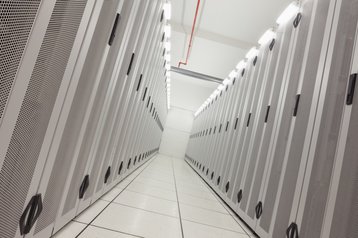Let me propose a question. What’s the true value of a dynamic asset management solution?
If data isn’t being transmitted in real-time or reliably, I’d argue that the answer is ‘not much’…
In principle, this question is easy to address. Deploy wire-free sensors to enable these outcomes and ensure any data integrates with third-party solutions.
Sounds simple, doesn’t it? Does that really apply to the data center though? After all, we’re talking about a large building full of metal with an environment that isn’t conducive to wire-free technologies.
We hear this concern a lot and ultimately your choice depends on your specific data center environment.
What about Bluetooth as a candidate?
As a wireless protocol Bluetooth has found favor within consumer applications. Does it also have a potential role to play in data centers?
It has potential when the network topology calls for multiple gateways to connect critical infrastructure together. Its adoption to date has been minimal, however its low power consumption lends itself well to supporting the many sensors that gather consistent data from gateways.
Similarly to Wi-Fi, there is one major limitation…
Because Bluetooth is a standard protocol, security can be an issue. To overcome this challenge, limit its use at a lower layer so it can be supported by securer transmission technologies, particularly in physical areas where there is less intense data traffic, or in parts of the facility where hardware is less congested, which would typically result in a weakened Bluetooth signal anyway.
Data centers are beginning to look at Bluetooth as an option, however, it is not the most common protocol used to detect and transmit asset management data.
Most facilities use either a wired solution or wire-free sensor networks. Of course, each one has its own merits.
Wired data centers, whilst offering higher levels of firewall security, have, in the past, been hit by industrially targeted cyber attacks, such as the infamous Stuxnet malware, characterized by its ability to jump from machine to machine on the network.
Differences aplenty
One of the most obvious differences between wired, Wi-Fi and wire-free protocols is that the latter two have the ability to easily connect a new device without significant reconfiguration. With wire-free solutions, the monitoring data that could previously only be delivered from remote or difficult to reach areas using physically connected measurement systems, can now be extracted through deployment of simple peel-and-stick applications.
Wired solutions, obviously, require cables and take up Ethernet ports and they demand a much greater degree of management in terms of maintaining the wires that run from server to server, device to device and all the connections in-between.
This also means that whilst wired solutions offer stability and reliability without the issues relating to range or signal strength, they are also limited in scope. Wire-free monitoring, however, can be scaled, not just within one data centre, but to multiple facilities anywhere in the world.
Because data centers house a dense amount of metal, whatever data transmission technology is used has to be able to penetrate through computer hardware housing and water cooling systems. Perhaps the most efficient technology in this space is one that utilizes a frequency of 433 MHz. This is allocated as an ISM (Industrial, Scientific & Medical) band throughout most of the world, allowing unlicensed usage under certain conditions.
This relatively low frequency also has the advantage of being able to better penetrate metal and liquids than higher-frequency ISM bands using technologies like Wi-Fi (at 2.4GHz or 5GHz). This means that equipment can use less power, and require fewer gateways since the signals can span longer distances.
Data center managers who are considering the best options for detecting and transmitting data may find that wire-free sensor networks have a higher initial cost than more traditional protocols. This is quickly offset against the value that they can offer in terms of always delivering real-time information and power being supplied on each sensor tag, so no additional power source is needed.
Finally, the sensors actively transmit data, unlike other solutions that use passive readers. As data centres continue to grow in size and companies house their data in faraway facilities, reliable data is key to keeping track of the entire data center estate. It’s not always possible, or essential, to be physically in the data centre anymore but it is essential to know where assets are and how they are performing, and data provides that outcome.
Whatever you choose to monitor your data center, wires or no wires, ensure it is secure, reliable and transmits data in real-time. Those are what we recommend for every facility.
Peter Vancorenland is chief technology officer at RF Code



